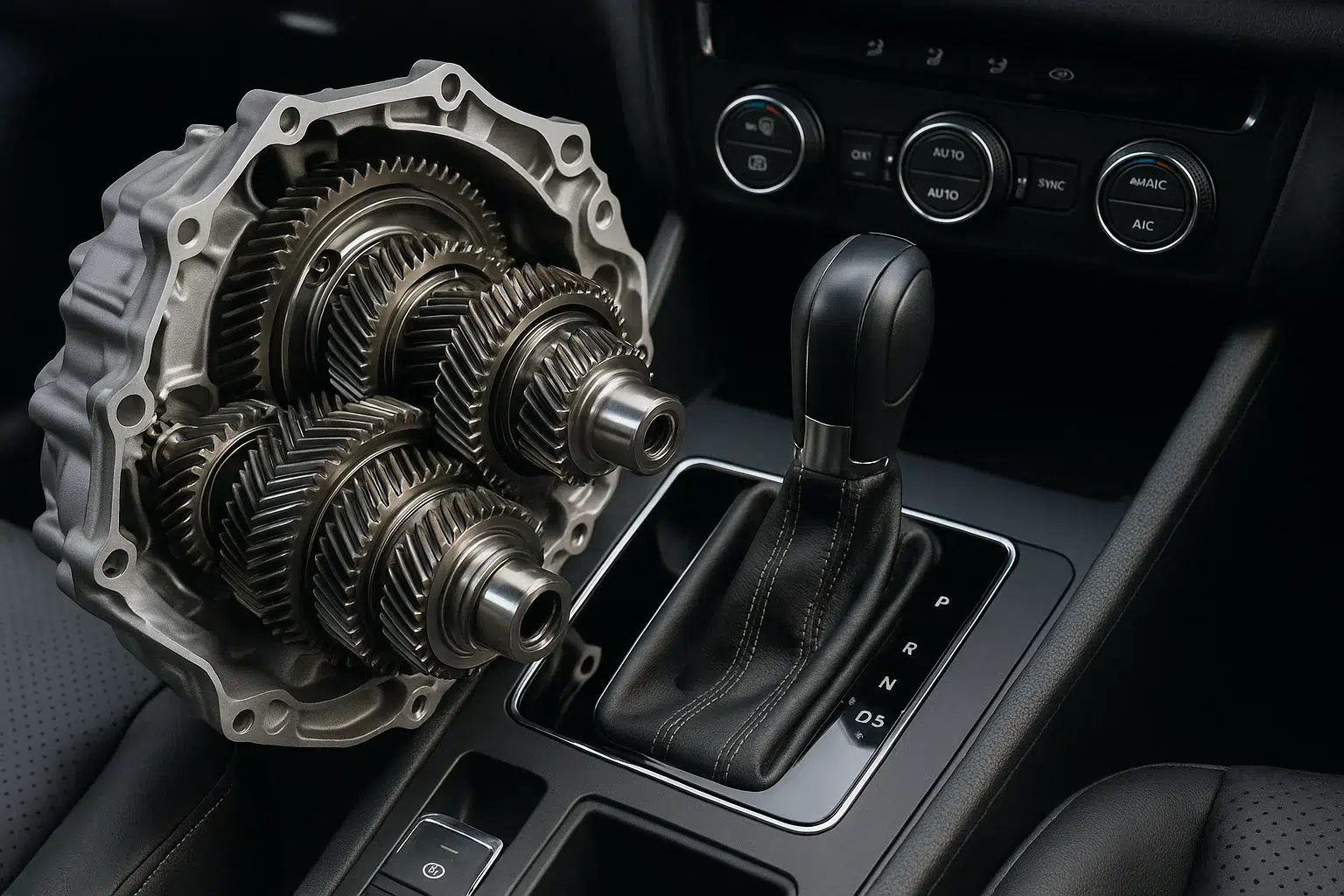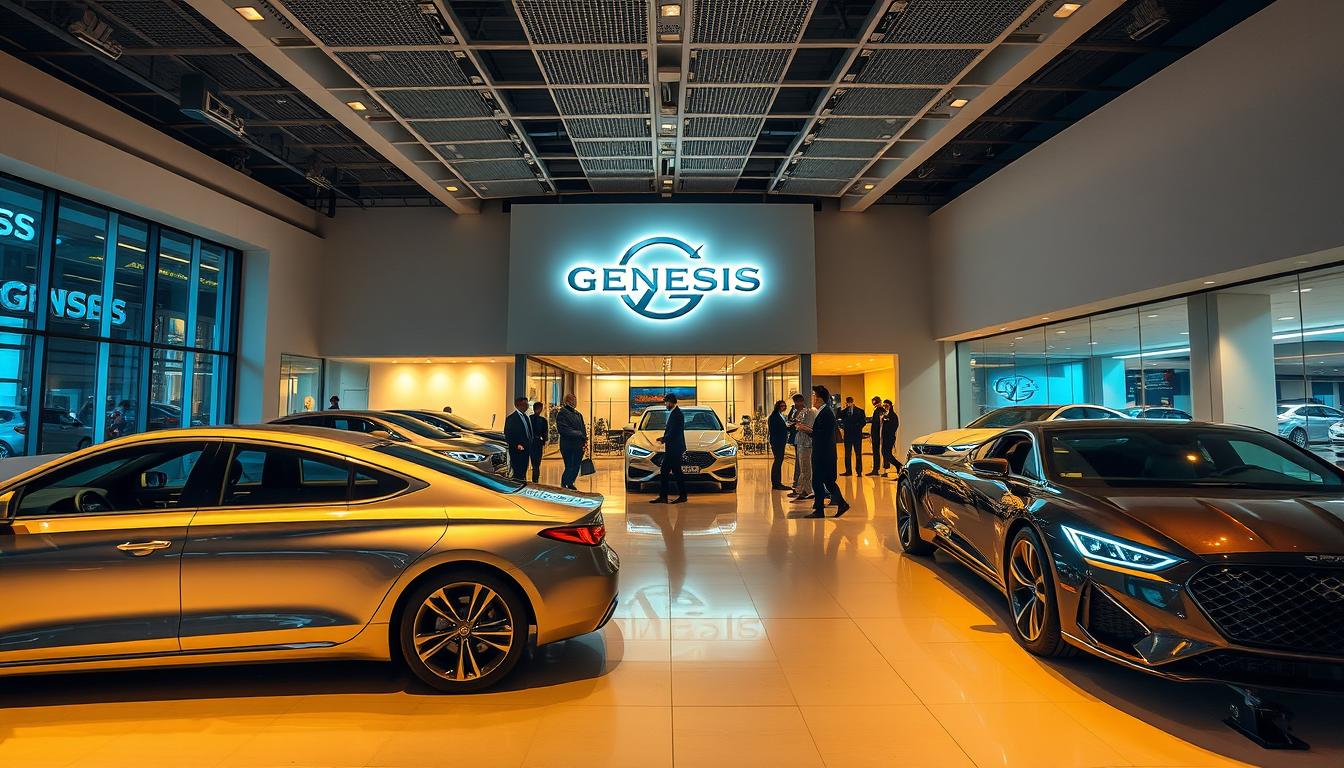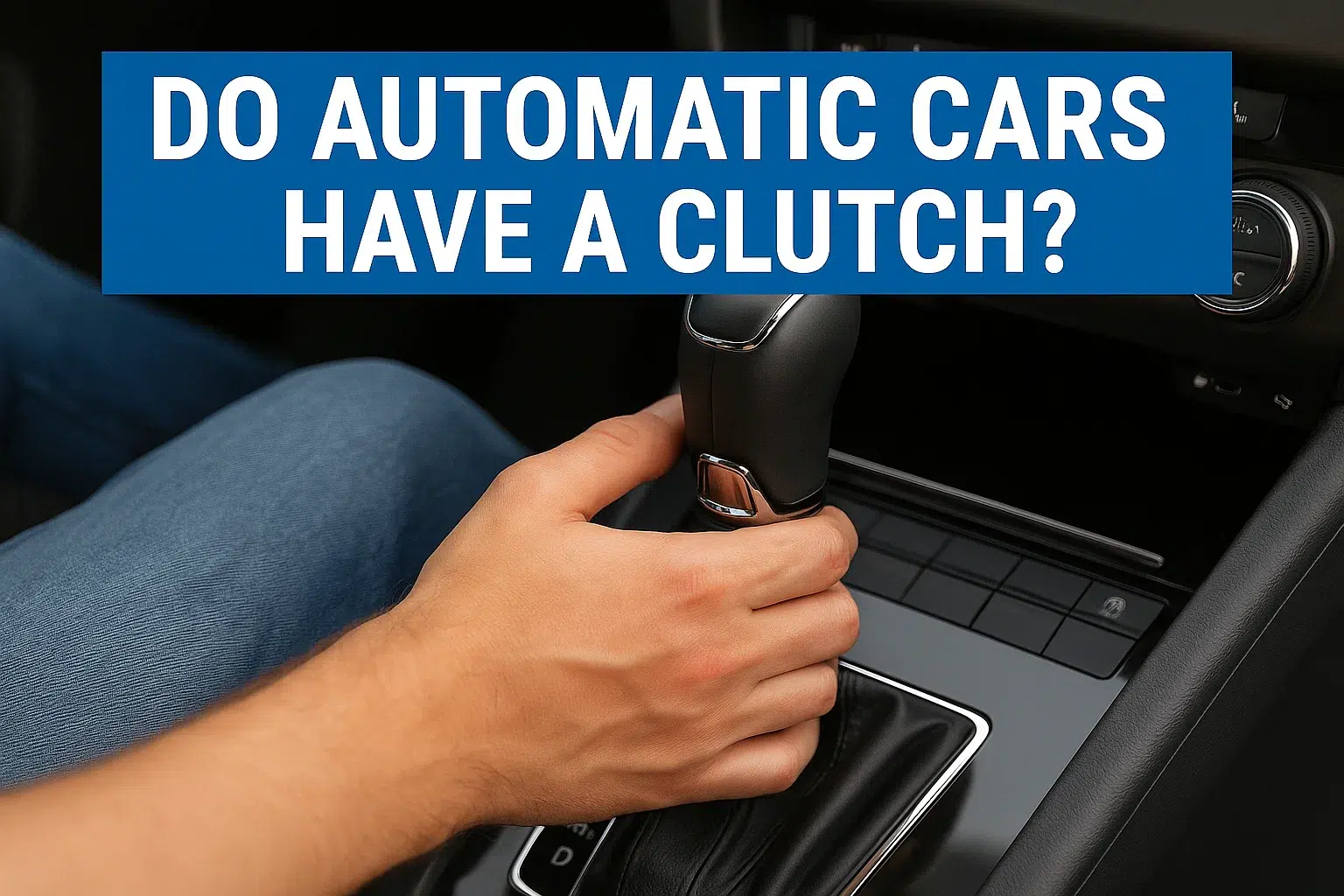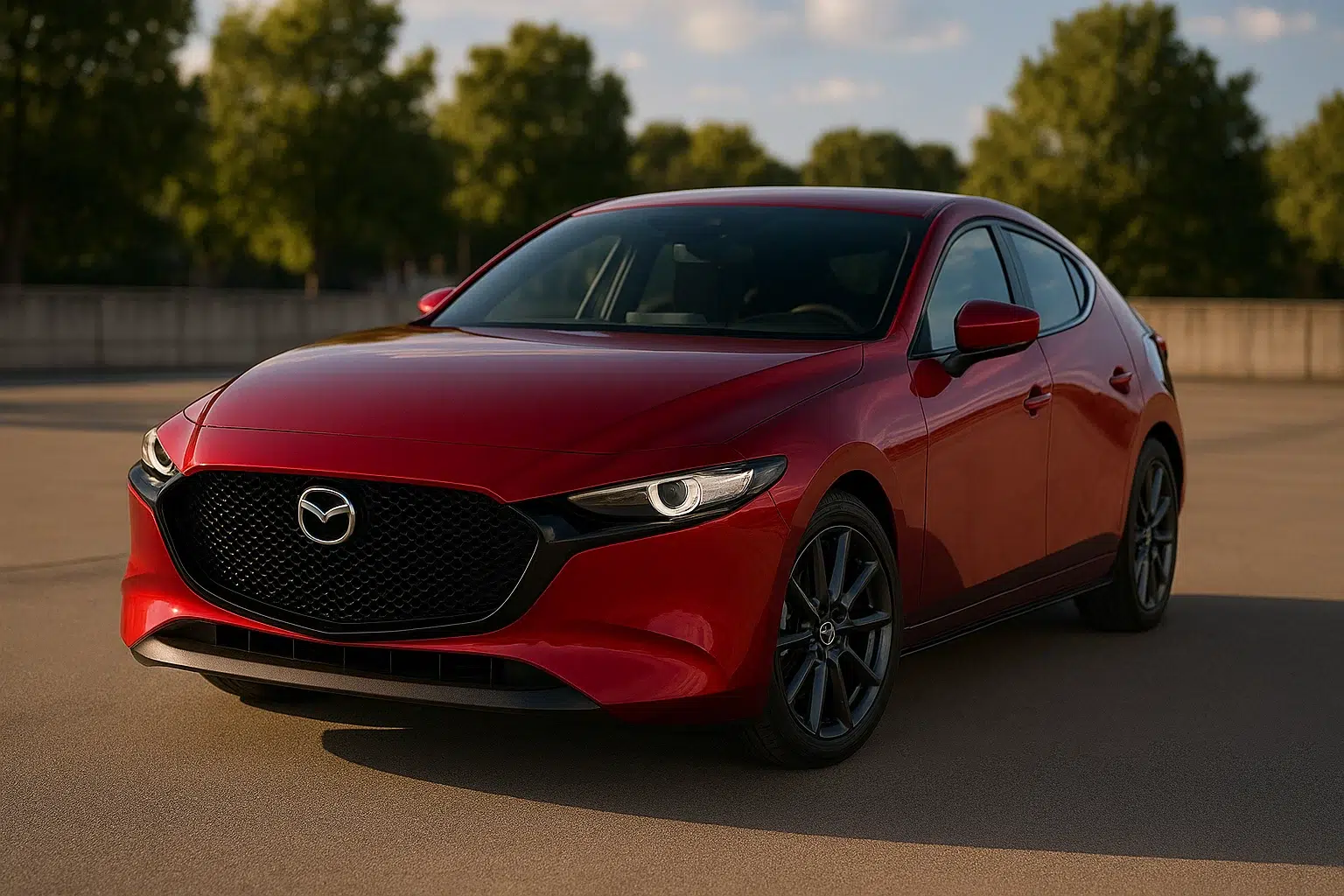The automotive industry is undoubtedly one of the sectors that have continuously undergone an engineering transformation, and one of the most considerable upgrades is the implementation of new technologies like the Dual Clutch Transmission (DCT). It does not matter if you are an enthusiastic driver or just an occasional one; knowing the details of modern transmissions will definitely assist you in the coming future during car purchases or maintenance checkups.
In this guide, you will gain knowledge on all of the features regarding DCT, including its functions, advantages and disadvantages collated and compared to other transmissions, and other relevant information.
What is a Dual Clutch Transmission (DCT)?
DCT, widely referred as a Dual Clutch Transmission, is an example of a modern automatic transmission that features two clutches for controlling odd and even gear sets. Unlike traditional automatics, DCTs do not utilize a torque converter, resulting in smoother and much quicker gear changes.
The adoption of DCTs in dual clutch transmission cars as compact city vehicles and even in powerful sports vehicles is mainly because of their DCTs enhanced fuel efficiency as well as performance.
How Does a Dual Clutch Transmission Work?
The DCT system is composed of two independent clutches.
- The first clutch controls the odd-numbered gears: 1st, 3rd, 5th (and 7th if the car is equipped with a 7-speed gearbox).
- The second clutch controls the even-numbered gears: 2nd, 4th, and 6th.
The system already has the next gear pre-selected while you are driving in the current gear. The system performs a smooth switch between the two clutches as you accelerate, allowing gear shifts to be made nearly instantaneously while maintaining power flow.
This approach to switching between clutches is one of the reasons DCT transmission improves the car’s mileage, as less fuel is wasted during gear shifts.
History & Evolution of DCT
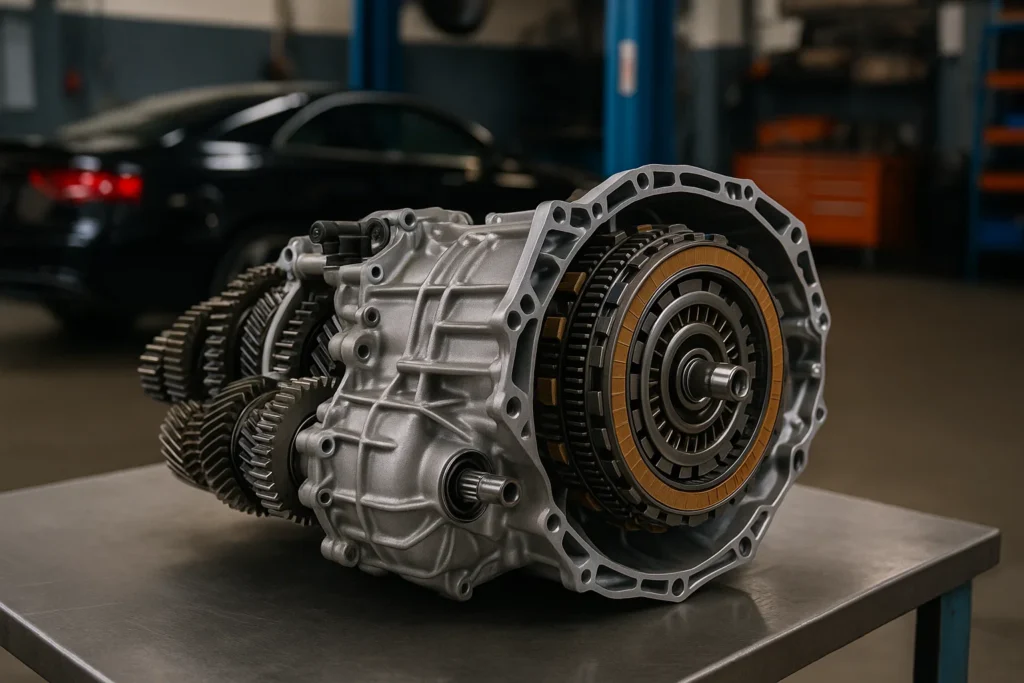
DCT technology is quite modern, but it has roots in racing technology from the 1980s. They were adopted early on by Porsche and Volkswagen, which later on used them in mass market vehicles, with DSG (Direct Shift Gearbox).
Now, DCT technology is widely used by many manufacturers including Mazda, Audi, BMW, Hyundai, Kia, 4 and even Ferrari, with it being included in many of their models and performance lines.
Advantages of Dual Clutch Transmission
- Gears Shifted Faster: Gear changes are nearly instantaneous, improving performance.
- Fuel Economy: Power loss during shifts is minimal.
- Smooth Driving: Especially beneficial during highway cruising or overtaking.
- Clutch-Free Driving: Easier driving in the city and during rush hour.
- Easier control: Driving in manual mode is possible using the paddle shifters or gear levers.
DCT systems are best for drivers looking for the ease of automatics and the performance of manuals.
Disadvantages of DCT
Like every technology, DCT has some disadvantages:
- Low-Speed Jerkiness: Commonly observed during stop-and-go conditions in dense traffic.
- Higher Maintenance Costs: Increased costs in servicing face due to expensive repairs.
- Overheating Issues: Common in dry clutch systems running in hot ambient air without sufficient cooling.
- Steep Learning Curve: Adjustment to the shift behavior takes time for some drivers.
In cold temperatures, a car heater not functioning properly can be mistaken for DCT problems. Diagnosing issues accurately is crucial.
Types of Dual Clutch Transmissions
1. Dry Clutch DCT
This type specializes in lighter vehicles. Its efficiency is better, but it has a tendency to overheat in stop and go traffic.
2. Wet Clutch DCT
These are best suited for high-performance or heavier vehicles. They are immersed in oil, thus offering smoother operation and better heat dissipation.
DCT vs Automatic Transmission in Car
DCT and automatic transmissions both aim to provide a clutch-less driving experience. However, both of them work in different ways.
- An Automatic Transmission in Car uses a torque converter to change gears, and although it shifts gears seamlessly, the process can be inefficient.
- In contrast, DCT utilizes direct clutch engagement which allows for more immediate and responsive shifts.
If the goal is to achieve spirited driving while maintaining fuel efficiency, DCT is typically the preferable option.
Which Cars Use DCT Today?
DCTs are now integrated into a variety of vehicles such as:
- Hyundai i20 N Line (7-speed DCT)
- Kia Seltos 1.4L Turbo
- Volkswagen Virtus and Taigun (DSG)
- Audi A4, A6 with S-Tronic
- Skoda Octavia RS
- BMW M models (older versions)
- Ferrari 488, 812 Superfast
- Porsche 911 with PDK
Luxury cars often pair DCT with adaptive cruise control systems, enhancing the sense of highway autonomy for the driver.
Do DCT Cars Have Clutches?
Yes, DCT systems found in modern automatic cars have clutches – specifically, two of them. However, these are automatic, so there will not be a need for a driver to operate them manually.
This DCT feature differentiates the systems further from both manuals and traditional automatics.
How DCT Affects Driving Comfort
Cars equipped with DCT systems tend to feel more responsive, particularly in regard to acceleration. Smooth and fast transitions, particularly for highway cruising, are ideal since they can pre-select the appropriate gears.
On long drives, you can use cruise control in cars with DCT for a seamless experience, especially when it is combined with paddle shifters and automatic braking system.
Maintenance and Care for DCT Vehicles
Taking care of your dual clutch transmission can extend its lifespan:
- Always utilize the advised Automatic Transmission Fluid.
- Avoid excessive stop-and-go driving in dry clutch DCTs.
- Timely servicing and fluid changes are essential.
- Avoid “riding” the brake and accelerator at the same time.
Also, if you notice a car smoking but not overheating, it could indicate issues with the DCT’s clutch plates, especially under strain.
Common DCT Issues & Solutions
The following are some common problems and solutions with DCTs:
- Delayed Gear Response: Low fluid and/or worn-out clutches are the leading causes of delayed gear engagement.
- Clutch Overheating: More common in dry DCT vehicles stuck in traffic.
- Burning Smell: A car exhaust smell can be attributed to overheated pack clutches.
- Fluid Leaks: A car leaking oil from the gearbox area.
Costly gear, clutch and car scratch repairs can be avoided by prompt diagnosis.
DCT & Integration with Vehicle Systems
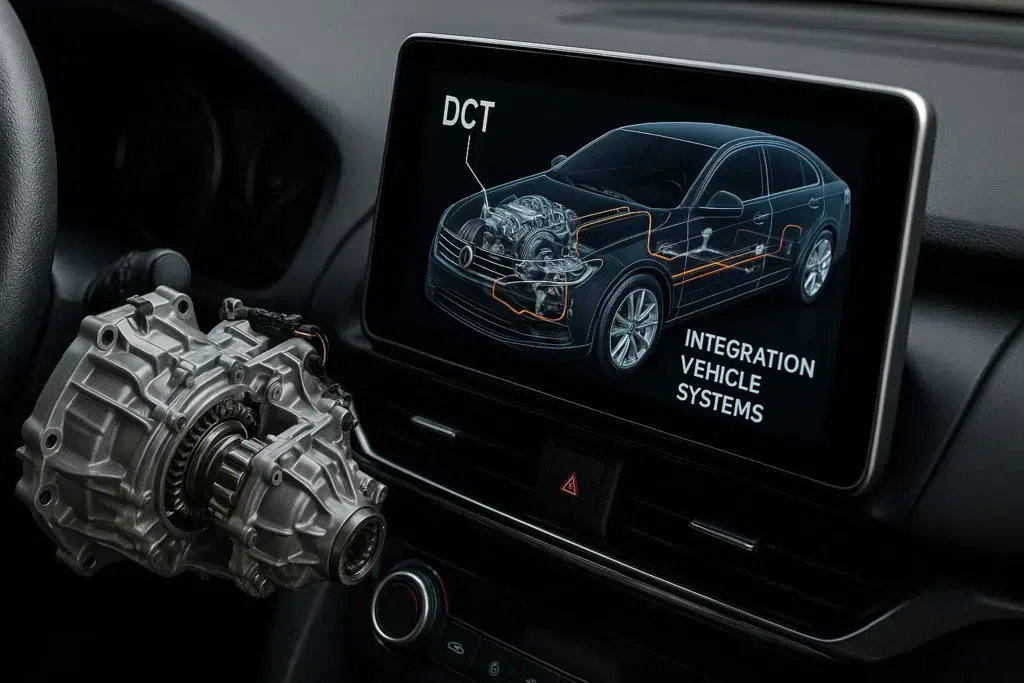
DCT is integrated with the car’s electronics. For example:
- It coordinates with the Car Starter system for seamless ignition and gear unlock.
- It enhances safety features by improving torque control.
- It carries torque through the Axles in a Car, thereby reducing energy loss during acceleration.
Driving Tips for DCT Cars
- Use the manual setting, if available, for steep climbs or overtaking.
- Avoid standing still for long periods of time by keeping the car in “Drive” mode. Instead, shift to “Neutral” mode.
- Aggressive driving should be avoided, except in vehicles such as sports cars, where the system is designed for it.
Ignoring strange symptoms, such as the car heater not working and the transmission behaving strangely, can point to wider problems in the electronic system.
Should You Take DCT Cars to an Automatic Car Wash?
Yes, it is completely safe to take DCT-equipped vehicles to an automatic car wash. However, it is important to follow the manual, especially with regard to shifting into neutral or the designated “car wash” mode.
Failure to follow the proper steps increases the risk of inadvertent gear engagement, overheating, and other damage.
Steering Wheel Controls and DCT
In many high-performance cars featuring a DCT, Steering Wheel Controls, and especially paddle shifters, allow the driver to override automatic controls without needing to take their hands off the steering wheel.
This enhances the enjoyment and responsiveness of sporty driving, providing the capability to shift gears during rapid acceleration and deceleration.
DCT in the Future of Automotive Technology
The future of DCT is most likely to be adopted in hybrids and performance automobiles. The use of DCT may become more limited in the future due to the increasing prevalence of electric vehicles (EVs) like big 0 terramax electric car since they usually utilize single-speed transmissions.
Nevertheless, for vehicles powered by internal combustion engines and for hybrids, the dual clutch continues to be one of the most effective transmission systems.
Conclusion
Dual Clutch Transmission (DCT) integrates performance, fuel consumption, and driving comfort seamlessly. It may require a bit more care and maintenance, but the advantages will, in most cases, have far more positives than drawbacks.
DCTs allow thrilling yet economical drives, be it in traffic or on the open road. Advanced features such as adaptive cruise control and steering wheel controls place drivers and vehicles in a more interconnected relationship with one another. DCT is likely to be fundamental to this technological transition.
If you’re in the market for a modern high-performance automobile, selecting a dual clutch transmission car may be one of the most intelligent choices you will make.

I am Tushar Balchandani, founder of Car Info Expert and someone who has been working extensively in the car industry as a car expert for 15 years. My aim is to provide useful truthful and reliable information to the readers based on my real experiences and hands-on experience. From buying tips to maintenance guides, I help readers make confident car-related decisions.

